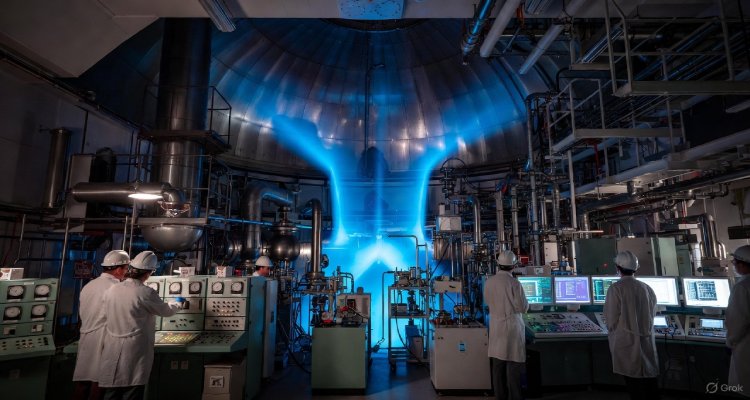Mind & Body: What’s Changing in the World of Wellness Today
From AI-powered mental health apps to plant-based healing, explore the latest innovations reshaping the wellness industry in 2025.
Introduction: A New Era of Wellness Begins
The global wellness movement has entered a transformative chapter—where high-tech tools, ancient traditions, and personalized care converge. From digital therapy platforms to biohacking wearables, what we once considered “alternative” is rapidly becoming mainstream. In today’s fast-evolving world, mind and body care is no longer a luxury—it’s a necessity. But what exactly is changing in the world of wellness today, and why does it matter?
Context: Wellness as a $7 Trillion Industry on the Rise
The wellness economy has grown exponentially over the past decade, now estimated by the Global Wellness Institute to be worth more than $7.4 trillion globally. From fitness and nutrition to sleep, mental health, and longevity science, the wellness umbrella continues to expand. The COVID-19 pandemic was a turning point, shifting wellness from trend to essential service. Now, in a post-pandemic world marked by hybrid work, screen fatigue, and chronic stress, the demand for holistic solutions is driving innovation.
What’s New: Emerging Trends Redefining Mind & Body Wellness
1. AI-Powered Mental Health Support
The rise of AI-driven mental health platforms like Woebot and Wysa is making psychological support more accessible and less stigmatized. These tools use natural language processing to deliver cognitive behavioral therapy (CBT)-based interventions on-demand. As insurance providers begin to integrate such apps into wellness coverage, digital mental health is becoming a cornerstone of modern care.
2. Personalized Wellness Through Wearables and Biometrics
Smart rings, continuous glucose monitors (CGMs), and HRV (heart rate variability) trackers are now central to self-optimization routines. Startups like Levels, Whoop, and Oura are offering hyper-personalized insights, encouraging users to monitor stress, sleep, and nutrition in real time. Biohacking has transitioned from niche to normalized.
3. Holistic Healing Goes Mainstream
Practices like breathwork, cold plunging, infrared saunas, and functional medicine are no longer exclusive to wellness retreats. Urban centers across the US now offer walk-in longevity clinics, often combining traditional therapies with cutting-edge diagnostics. Even large corporations are investing in these modalities for employee wellness programs.
4. Psychedelic Therapy Gains Ground
Following FDA breakthroughs and expanded clinical trials, psychedelic-assisted therapy—using psilocybin, ketamine, and MDMA—is now being recognized as a treatment for depression, PTSD, and addiction. Legalization in select US cities and states signals a shift in public and governmental perception of these formerly taboo treatments.
5. Food as Medicine: Gut Health and Plant-Based Focus
Nutrition is evolving beyond diet trends. There’s growing awareness around the gut-brain connection, prompting a surge in prebiotic and postbiotic food innovations. Functional foods—such as adaptogenic drinks and mushroom-based supplements—are replacing sugary energy beverages. The move toward plant-forward eating is not just about health, but also sustainability and ethics.
Expert Insight: Wellness, Democratized and Data-Driven
“We’re witnessing a democratization of wellness,” says Dr. Emma Caldwell, a digital health strategist and clinical psychologist. “Thanks to technology, people can now access tools that were once reserved for elite clinics or luxury spas.”
Analysts also point to the surge in corporate interest. According to Deloitte’s 2025 Health Outlook Report, 80% of employers are investing in comprehensive wellness packages, including virtual counseling, nutrition planning, and stress management tools.
On social platforms, the hashtag #wellnessrevolution has gained traction, reflecting a generational shift. Gen Z and millennials, in particular, are driving demand for inclusive, non-toxic, and science-backed solutions.
Impact: A Wellness Divide or a Universal Benefit?
While these developments promise better access and outcomes, experts warn of a potential “wellness divide”. High-tech solutions often come with subscription fees or require expensive hardware, raising concerns about health equity.
“There’s a risk of wellness becoming yet another privilege,” notes Dr. Aisha Greene, a public health advocate. “If we’re serious about well-being, we must ensure affordability and inclusivity.”
Meanwhile, traditional healthcare systems are slowly adapting. Some insurers now reimburse for meditation apps or fitness programs, while telehealth regulations are expanding coverage for mental and behavioral therapies.
What’s Next: The Future of Wellness Is Integrative
As the definition of wellness expands, the future lies in integration—combining physical, emotional, spiritual, and social health into one cohesive experience. Industry leaders are forecasting a rise in integrative care centers that blend Eastern philosophy with Western diagnostics. Workplace wellness will continue to evolve, and governments may begin incentivizing preventive health behaviors through tax credits or social programs.
In the long term, longevity and emotional resilience—not just aesthetics—will drive innovation in the mind-body space.
Conclusion: A New Wellness Culture Emerges
The world of wellness is no longer confined to green juices and gym memberships. It now spans AI-powered therapy, wearable tech, ancient healing, and clinical innovation. As society navigates the complexities of mental stress, digital overload, and climate anxiety, wellness offers a path to both individual resilience and collective healing.
The question is not whether wellness will remain relevant—but how it can be made equitable, evidence-based, and sustainable for all.
Disclaimer : This article is for informational purposes only and does not constitute medical advice. Always consult a qualified healthcare provider before making changes to your wellness routine.











